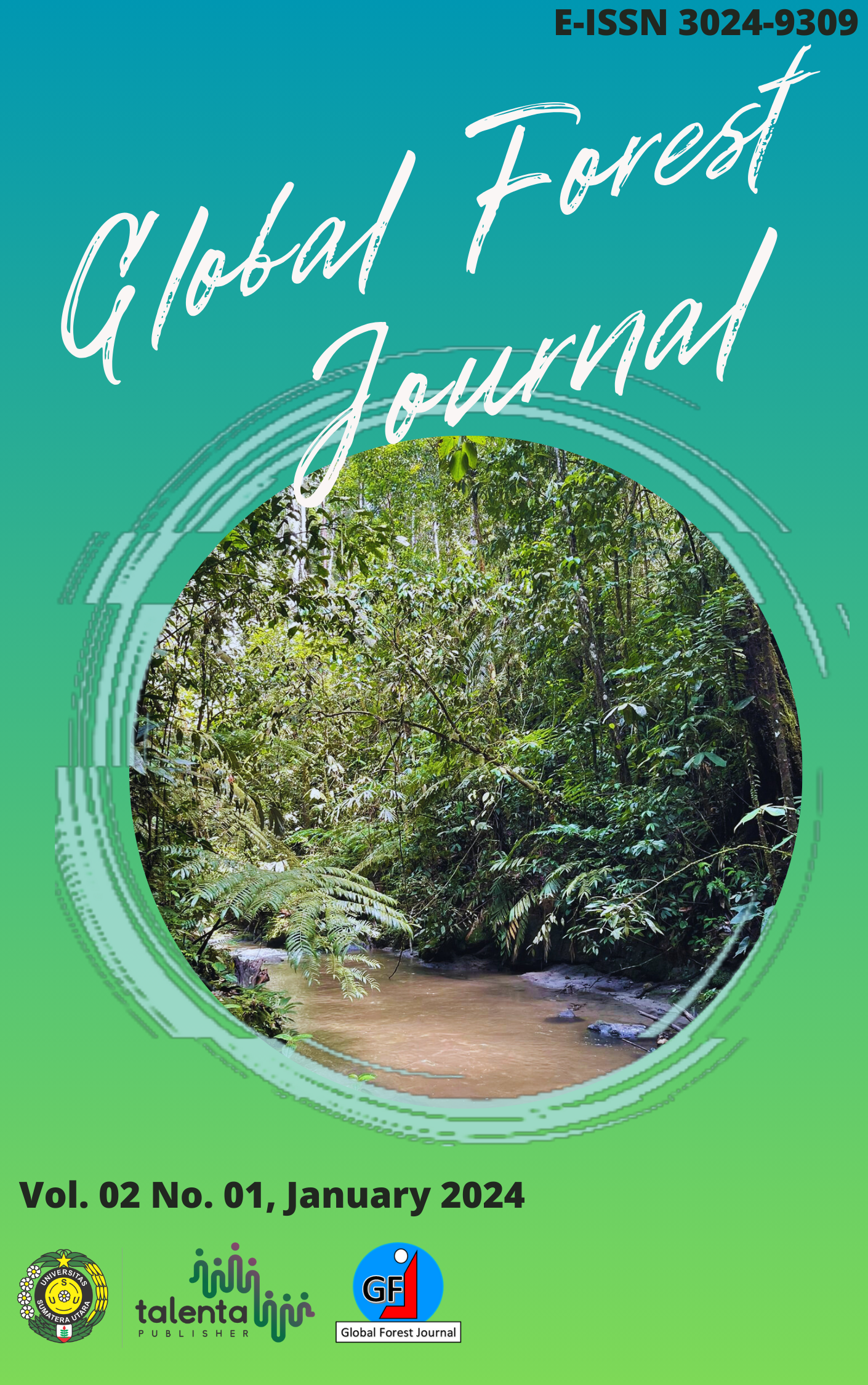Floral composition and carbon stock estimation of monospecies restoration area in Pasar Rawa, North Sumatra
DOI:
https://doi.org/10.32734/gfj.v2i01.15561Keywords:
Carbon, Monospecies, Restoration, Rhizophora apiculataAbstract
Mangrove forests are important in climate mitigation, particularly for their greatest carbon storage. Rhizophora apiculata, a mangrove species with numerous advantages, is frequently employed in restoration activities. Monoscpecies restoration activities are well known, although information on floristic composition and carbon uptake must be available. The objective of this research was to investigate the floristic composition and carbon stock of R. apiculata in the Pasar Rawa Village restoration area, Langkat Regency, North Sumatra Province. This study employed the vegetation analysis approach and carbon estimates based on diameter breast height (DBH) and total vegetation height. The study's findings indicate low floristic diversity in the research area. At the seedling stages, the greatest IVI (113.68%) was discovered in Achanthus ilicifolius, and the only species found in the sapling stage with an IVI value of 200% was R. apiculata. The study of diversity indices revealed very low values at the seedling stage (H'= 0.806) and no diversity at the sapling stage. The total carbon stored estimation in R. apiculata stands relatively low, at 8.56 tonnes/ha. The absorbed carbon produced by R. apiculata is 31.42 tons/ha with a CO2 absorption of 3.141 g/m2 and is classified as relatively low
Downloads
Downloads
Published
Issue
Section
License
Copyright (c) 2024 Global Forest Journal

This work is licensed under a Creative Commons Attribution-ShareAlike 4.0 International License.












